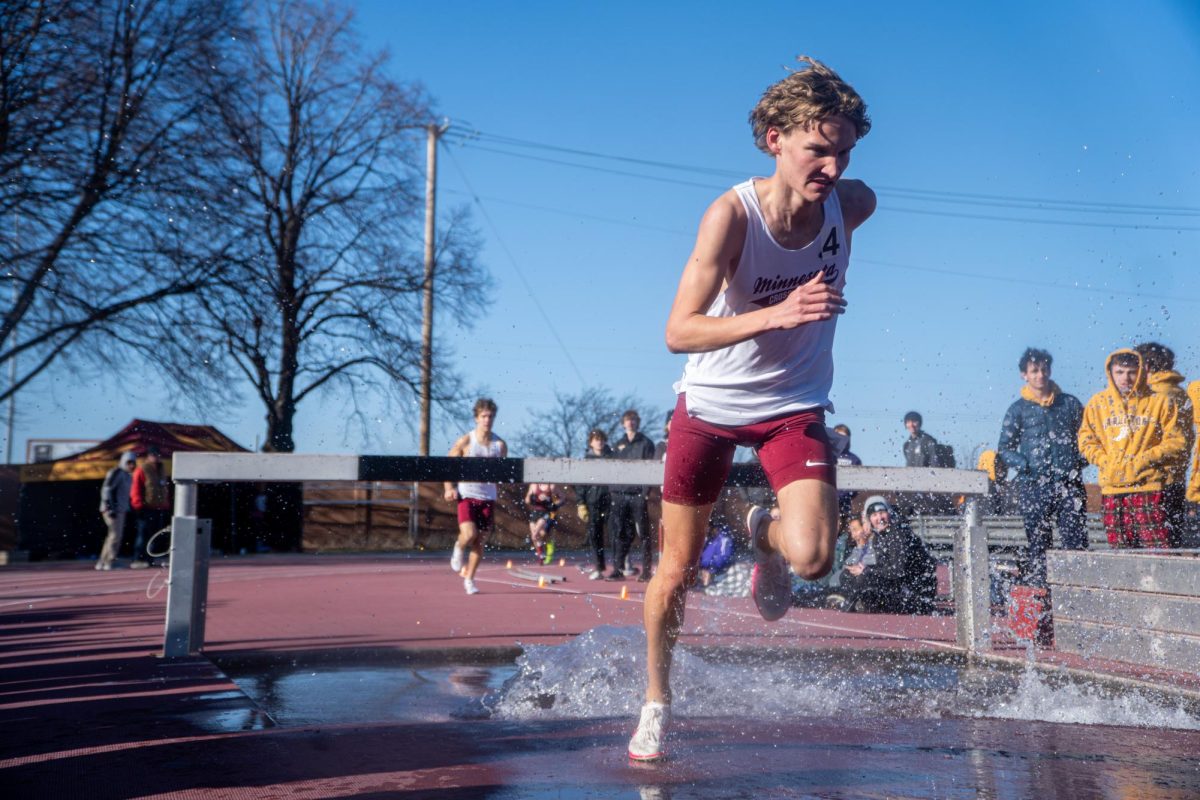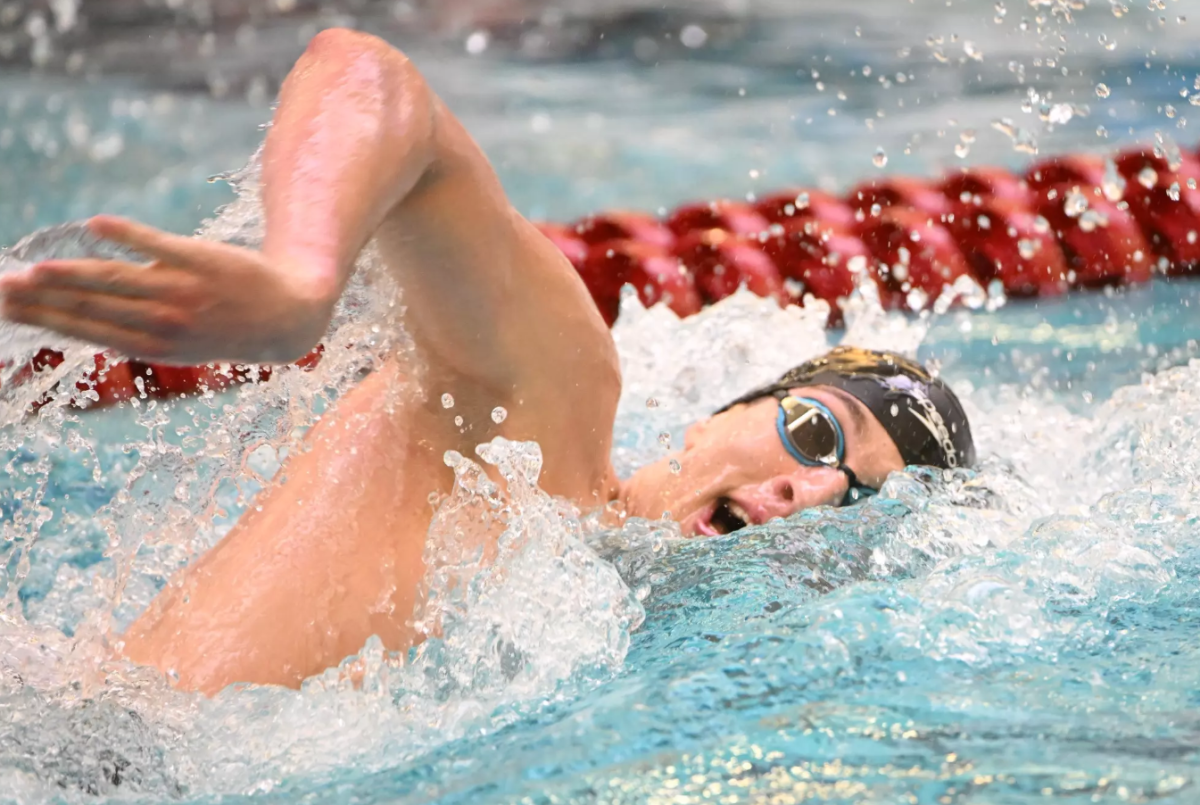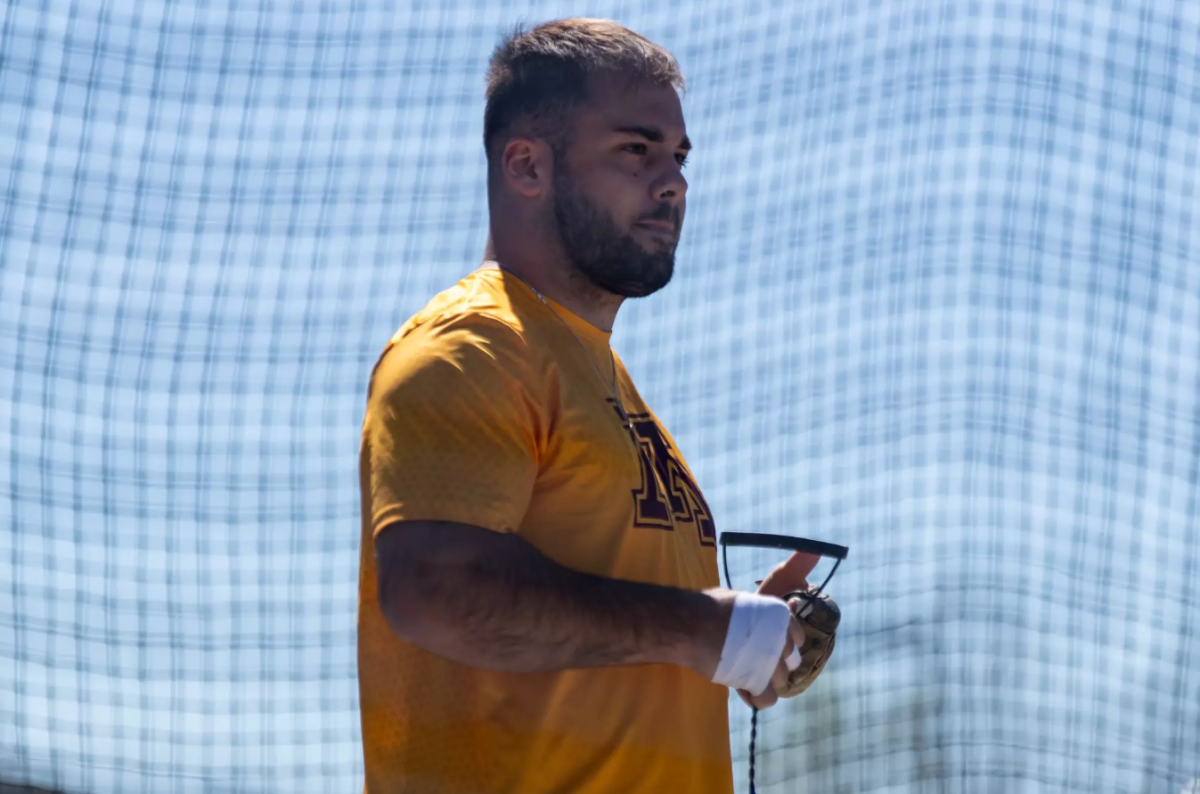The infield at the University Field House looks no different than it did one year ago. It is still the same cluttered blob of long jump pits, shot put areas and high jump mats as it was last February.
But just under the pole vault landing area, a two-inch thick foam pad covers the edges of the metal planting box.
And that foam collar, its red vinyl the same color as some of the flowers that lined the pole vault pit last year, tells the whole story.
Sunday marks the one-year anniversary of the death of Kevin Dare, a Penn State pole vaulter who fell and hit his head on the box while attempting a vault of 15-7 at the Big Ten indoor track and field championships in the Field House.
At the time of the accident, Dr. Elizabeth Arendt, the Gophers medical director who rode with the 19-year-old Dare to the hospital, said he died of massive head trauma.
Eighteen pole vaulters have died since 1985.
But it was Dare’s death and a father’s resolve that began a nationwide crusade for pole vault safety.
Ed Dare, Kevin’s father, worked with the American Society for Testing and Materials on a helmet made specifically for vaulters, which will likely be finished with testing on Thursday.
“It’s like Kevin’s pushing me,” he said. “We’re never going to stop the sport from being dangerous, but we certainly can make it where you’re not going to die.”
Technology advances
Dare’s new helmet, which is made out of Kevlar – the same material used for bulletproof vests – will likely be on the market this summer. It is just one piece of a major push toward safer vaulting equipment.
Improvements are being made on the ground as well. Currently, a collar can be placed over the box’s edges. However, a collar leaves about a five-centimeter strip of metal in the middle of the box exposed – exactly where Dare hit his head.
Gill Athletics, one of the nation’s largest suppliers of track and field equipment, last week released a “soft box” – a cushioned planting area that eliminates all hard surfaces.
Made of Skydex, a synthetic material, a soft box reduces the impact of a fall in the box by approximately two-thirds.
“A fall from 17 feet 6 inches onto a soft box is like falling on a standard box from four feet,” said Illinois pole vault coach Brian Carell, who also works for Gill as a sales representative. “If you fall on it, you’re going to hit pretty hard, but it’s a significant improvement.”
Jan Johnson, the chairman of USA Track and Field’s pole vault safety committee, spoke highly of the new equipment, but still doubts whether any of it could have saved Dare.
“We’ve been through five versions of the soft box, but will we ever be able to design a box that saved Kevin Dare’s life? Probably not,” Johnson said. “I don’t know if you can fall from 16 feet and not break your neck.”
Johnson, who blames the fall on improper coaching and Dare’s technique, helped to form the Pole Vault Safety Certification Board, which offers an online test to certify any American pole vault coach in teaching the event.
Making the sport safe
The Big Ten adopted several new pole vault regulations in August, including the extension of the landing pad and the mandatory use of box collars.
Additionally, the National Federation of State High School Associations now requires the use of deeper landing pads to decelerate landings.
Jesus Quesada, a 16-year-old from Clewiston, Fla., and Samoa Fili II, a 17-year-old at Wichita Southeast High School, both died last spring after bouncing off the landing pad and hitting their heads on
pavement.
But Ed Dare is not stopping here. He’s not going to quit until he closes the fraternity he shares with Quesada and Fili’s fathers.
Dare hears the arguments that new equipment could price pole vaulting out of existence, making it too expensive for the tight budgets most track programs carry.
A box collar retails for around $300, while advanced landing systems cost approximately $12,750. The soft box is selling for $3,000.
Dare believes safety is worth any price.
“I’ve had so many people ask me if this new equipment is too costly, but unless you’ve lost your best friend like I have, you can’t understand it,” he said. “If the schools say the equipment is too costly, then do away with the sport. It’s not fair to expose athletes to danger without taking care of them.”
Dare said before his son died, he didn’t even know pole vaulting had produced fatalities.
He’s not letting anyone forget it now.
“I’ve had some pretty emotional discussions with coaches about making the sport safe,” said Dare, who estimates he talked to about 200 high school and college coaches over the past year. “It would be easier on me if I didn’t do this, but it’s what Kevin would have wanted.
“If somebody had asked these questions years ago, my son would have lived.”
Remembering Kevin Dare
Minnesota’s men’s track team will host the Snowshoe Open on Friday night, but coach Phil Lundin said no ceremony for Dare is planned at the meet.
Lundin added there are no plans for a permanent memorial to Dare in the Field House.
Vault coach Mario Sategna agreed with Lundin’s decision.
“We had a memorial the day after the meet last year, and for us to have another one would open up more wounds,” Sategna said. “We’ve been in contact with Penn State, and it’s not like we’ve forgotten.”
The box collar in the Field House proves it.
“It’s hard to remember and look back on last year. My family and I are definitely not looking forward to this weekend,” Dare said. “This work keeps bringing back that day, but my gratification will come when I can look at the sport and it’s safe.”
There is no memorial to Kevin Dare in the Field House. But there is a red box collar in the pole vault area that wasn’t there on Feb. 23, 2002.
And for Ed Dare, that’s enough.
Ben Goessling welcomes comments at bgoessling@mndaily.com







